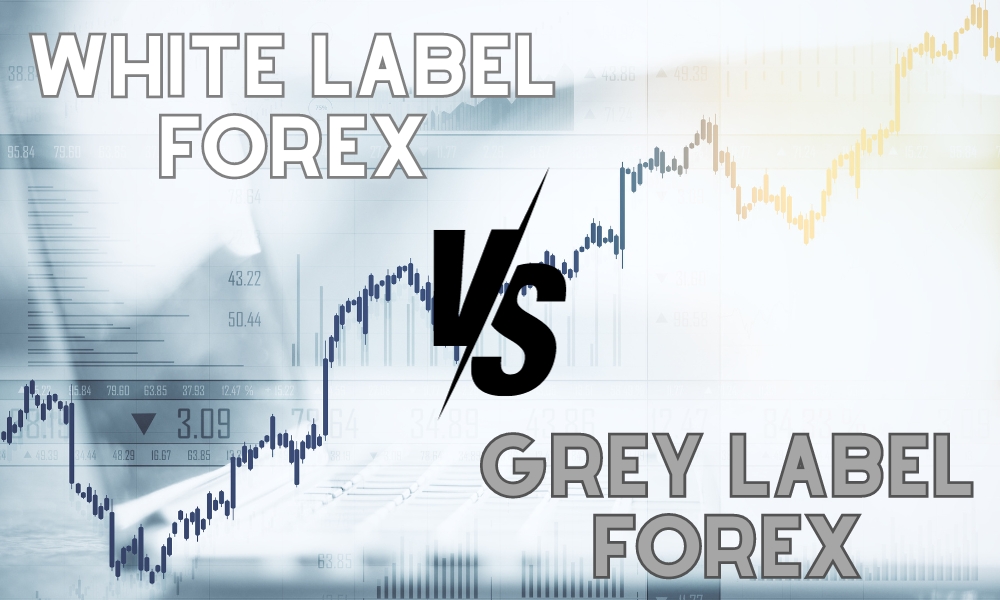Is White and Grey Label Forex a new concept for you? Don’t worry, we have got you covered! In the fast-paced realm of forex trading, choosing the right approach can be a game-changer for businesses and brokers.
Two distinct strategies, White Label and Grey Label, stand out as pivotal concepts in the industry. Understanding the nuances between these labels is not just beneficial but essential for informed decision-making.
Let’s delve into White Label and Grey Label in forex to unravel their differences and strategic implications.
Introduction
In the competitive landscape of forex, navigating the intricate web of product distribution and branding is crucial. White Label and Grey Label are terms that often come into play, each with unique characteristics.
Comprehending these concepts for businesses and brokers alike opens doors to strategic choices that can influence market presence and success.
What is White Label Forex?
White Label in Forex involves the creation of products or services by one company but marketed and sold by another under its brand name.
It’s a collaborative effort where the manufacturer produces a generic offering that the reselling company can customize or rebrand. You can explore the features of White Label Forex through Metherworld broker.
Advantages of White Label
- Faster Time to Market: Businesses can swiftly launch new products or services without extensive development.
- Cost-Effective: In-house development reduces research and development expenses. As a result, mass production at a cost-effective price is the main advantage of white label forex.
- Focus on Branding and Marketing: The reselling company can concentrate on effective marketing without the burden of extensive product development.
Disadvantages of Grey Label Forex
- Less Control: Grey Label entails reduced control over the trading platform and infrastructure provided by the third-party company. This limitation can hinder customization and optimization according to specific broker needs.
- Limited Flexibility: Compared to White Label, Grey Label offers less flexibility. The intermediary position may restrict the broker from implementing changes swiftly or tailoring the platform extensively.
What is Grey Label Forex
Grey Label, positioned between White Label and private labeling, involves partial rebranding while retaining some association with the original manufacturer.
It offers more customization options compared to White Label but doesn’t provide complete control over branding.
Advantages of Grey Label
- Customization: More flexibility in product customization compared to White Label.
- Established Reputation: Leverage the manufacturer’s reputation to build trust with customers.
- Cost Savings: Lower costs compared to developing a product from scratch. If you want to access Grey Label Forex and its features, check out Novatechfx broker.
Disadvantages of White Label Forex
- Dependency on Platform Owner: Brokers using White Label platforms are reliant on the platform owner. This dependence limits access to the full configuration of server settings, impacting the broker’s autonomy.
- Restrictions on Changes: All changes to the platform, such as modifying spread indexes or trade settings, require prior agreement with the platform owner. This can lead to delays and procedural complexities.
- Growing Costs with Audience Expansion: As a broker’s client base expands, costs associated with White Label solutions increase concurrently. This financial burden can escalate with the growing audience, impacting profitability.
Key Differences Between White Label and Grey Label Forex
Level of Customization:
- White Label: Geared towards swift market entry, White Label opts for limited customization options. This streamlined approach prioritizes efficiency.
- Grey Label: Positioned as a middle ground, Grey Label provides a more flexible customization spectrum than White Label. It allows for tailoring products or services to specific market demands without the full depth of private labeling.
Control Over Branding:
- White Label: Involves limited control over branding, as the reselling company typically adopts the original branding with minimal modifications. Speed of market adoption is a primary focus.
- Grey Label: Offers more control compared to White Label. While retaining some association with the original manufacturer, Grey Label allows businesses greater latitude in shaping the brand image.
Key Similarities Between White Label and Grey Label Forex
- Collaboration: Both White Label and Grey Label thrive on collaboration between a manufacturer and a reselling company. This partnership is the bedrock for streamlined product development and market entry.
- Market Entry Efficiency: Both strategies empower the reselling company to enter the market without the need for extensive in-house development. This shared trait significantly reduces research and development expenses, making them cost-effective solutions.
- Cost-Effectiveness: Both White Label and Grey Label are committed to cost-effectiveness. By leveraging existing products or services, businesses can offer solutions without incurring high research and development costs.
Read also: 1 USD to PKR in 1947
Conclusion
In conclusion, White Label and Grey Label in forex present distinct strategies for businesses and brokers. White Label, with limited customization and a focus on efficiency, suits those aiming for quick market entry.
On the other hand, Grey Label, offering more flexibility, strikes a balance between customization and retaining the original brand association.
While both involve collaboration, streamline market entry, and are cost-effective, the choice depends on the desired level of control and branding. Understanding these differences is essential for making informed decisions in the dynamic world of forex trading.

